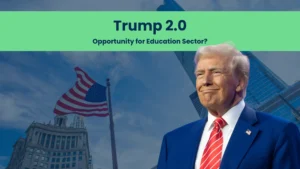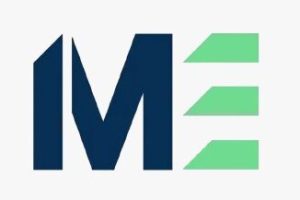On September 21, 2025, the U.S. administration introduced a $100,000 fee for new H-1B visa applications. For decades, the H-1B route was the golden bridge for Indian engineers, scientists, and graduates to enter the American job market. Now, that bridge has suddenly become a toll road with a staggering price tag.
This announcement has sparked anxiety among professionals, families, and employers. But it may also mark a historic turning point for India’s education system and job market.
Note: The White House has clarified that the $100k fee applies only to new H-1B petitions, not to existing visa-holders or renewals.
India and the H-1B: The 71% Reality
According to official USCIS data, 71% of all H-1B visas approved in FY2024 went to Indians. That’s not just a majority — it’s near monopoly of global tech talent. Any shift in H-1B policy therefore hits India hardest.
Does this concentration mean India has been too dependent on the U.S. as a career destination?
The Opportunity in the Shock
1. A Brain Drain Slowdown or a Brain Gain?
For decades, India’s brightest minds have flown westward, creating a brain drain that hollowed out domestic innovation. But with this new financial barrier, we may see fewer Indians making that leap.
- Will the so-called “brain drain” finally slow down?
- Or will talent simply shift destinations from the U.S. to the U.K., Canada, or Australia?
- Or could this be the moment when more Indian graduates choose to stay and build at home?
This is the inflection point where India can move from a “talent exporter” to a talent magnet.
2. Indian Institutes: Time to Rise
Premium Indian institutions like IITs, IIMs, Ashoka, ISB, and a wave of private universities are already positioning themselves as global alternatives. With U.S. pathways becoming uncertain, these institutes can step up by offering globally benchmarked programs at far lower costs.
Foreign education companies also see this as an opening:
- Setting up joint programs in India rather than depending only on outbound mobility.
- Offering remote, hybrid, or transnational degrees that plug directly into India’s expanding corporate R&D centers.
Would you choose a high-quality Indian or U.K.-delivered degree at half the cost, over a U.S. option that now leads to uncertain visa prospects?
3. MNCs in India: Rethinking Global Hiring
For multinational corporations, the math is simple. A $100k surcharge makes U.S. hiring far less competitive. Why not expand Indian teams, where talent is abundant and costs are lower?
This shift could accelerate:
- Growth of product R&D centers in Bengaluru, Hyderabad, and Pune.
- Partnerships with Indian edtechs and universities to create pipeline programs for AI, cybersecurity, and cloud computing roles.
- Global remote work models where Indian talent contributes without relocating.
For MNCs, this is not a setback but a strategic reset: India becomes not just a back office, but a hub of product innovation and leadership.
Who Will Feel the Pain?
Of course, not everyone will cheer this change:
- Indian students in U.S. universities who saw the H-1B as their post-graduation pathway now face uncertainty.
- Small U.S. startups that depended on affordable H-1B hires may struggle to absorb the new costs.
- Recruitment agencies built on facilitating India-to-U.S. placements will need to pivot or perish.
- Even U.S. universities may see reduced enrollment from Indian students if the post-study work route becomes less viable.
But in every disruption lies the seed of a new order.
The Global Rebalancing of Talent
This development forces a big question: Is America losing its magnetic pull on India’s talent?
- The U.K. has already ramped up student and work visa routes, including post-study work options.
- Canada and Australia remain attractive with immigration-friendly policies.
- But if Indian institutes and MNCs step up, could India itself become the preferred long-term destination for its own top talent?
What Do You Think?
- Will this policy mark the end of brain drain to the U.S.?
- Do you see India becoming a hub of retained talent, or will students simply divert to other countries?
- If you are a student, parent, or educator, would you now reconsider your plans for U.S. education or work?
- For employers: does this push you toward expanding Indian operations?
Final Word
The $100,000 H-1B fee is not just an American policy. It’s a global talent reset – one that could reshape where Indians study, where they work, and how multinational companies design their workforce strategies.
For India’s education sector and job market, this is more than a challenge. It’s a once-in-a-generation opportunity. Those who act fast may find themselves at the center of a new global talent map.Would you see this as a roadblock or as the start of India’s brain gain era? Share your thoughts in the comments, or write to us at contact@indiamarketentry.com.





